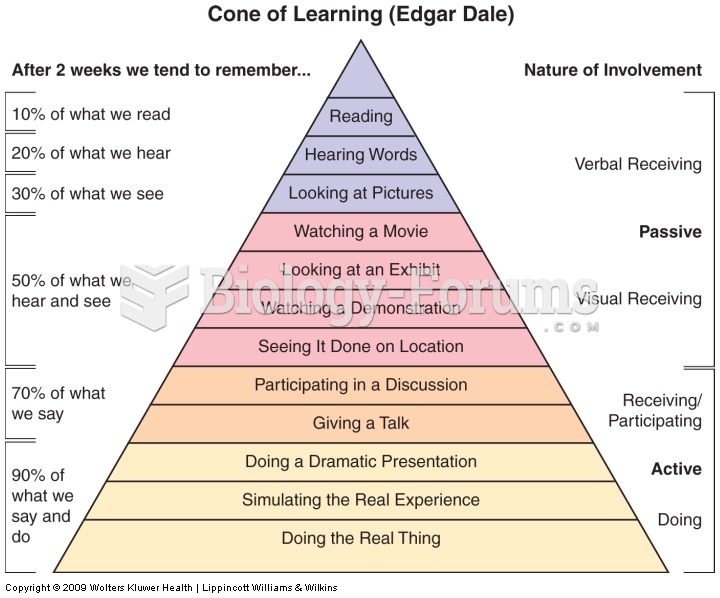Answer to Question 1
Answer: 1, 3, 5
Explanation: In the 1950s, John Bowlby described attachment theory to explain the degree to which an infant can rely on his or her parents, particularly the mother, to meet needs for security. Attachment theory may be used as a lens through which to examine the development of sexual identity and behaviors. Bowlby observed that a distressed infant who is securely attached to the caregiver will turn to the caregiver for solace. If the infant has been deprived in some significant way from developing a secure attachment to the caregiver, however, another attachment style may develop. One is a pattern called preoccupied attachment, in which the infant has a high desire for intimacy but is fearful of being abandoned. The infant may show clingy behaviors and, if threatened by the potential loss of the caregiver, may react with anger, jealousy, and panic. Fearful attachment results in high levels of anxiety and avoidance of dependency on the caregiver. The dismissive attachment style results in a child who withdraws from others and relies on himself or herself. The child with dismissive attachment would see intimacy as a sign of weakness. Authoritarian and permissive refer to styles of parenting, not attachment patterns.
Answer to Question 2
Answer: 3
Explanation: Disorders of sexual development, sometimes referred to as intersex conditions, are a group of conditions resulting from hormonal errors during fetal development in which internal genitalia differ from external genitalia. In some cases, these are not discovered until adolescence, when the patient fails to achieve puberty. Gender dysphoria is distress associated with psychosocial incongruence between an individual's assigned gender and the gender with which the individual identifies. Priapism is a prolonged erection lasting more than 4 hours. Erectile dysfunction is a sexual dysfunction that may be acquired after a period of adequate functioning or that may occur as a lifelong inability to obtain or maintain an erection.







